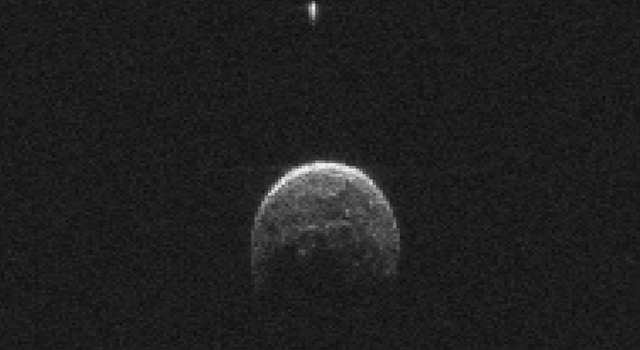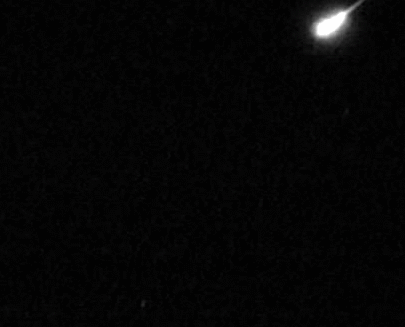Astral Projections Online August 2025
Check our Website for updated content at www.astra-nj.com
Club Presentations Wanted:
Does anyone have any astronomy items of interest to share with the membership?
Please let us know at Club Contacts.
Club dues and membership. If you renew after March 31 you will be renewed as a new member.
ASTRAL PROJECTIONS ONLINE (APO for short) is an email-linked publication for members only. If you exit APO to the club website or other resources you will need to use the emailed link again to get back to it. If you wish to retain a copy please bookmark or refer back to the email. We will make all efforts to post by the first week of the month.
Submissions Welcome: Members are invited to submit articles, photos, news, or stories for inclusion with Astral Projections Online. Please contact the ASTRA Webmaster.
Event Calendar
Event Cancellations: Members will receive email notifications of event cancellations.
Upcoming August ASTRA Meeting
ASTRA's next meeting will be Friday, August 8, 2025, at 8:00 PM EST at IBSP Area 15.
July and August meetings are Observing Meetings at Island Beach State Park.
Unlike the public Star Parties at IBSP, Observing Meetings are for members only.
All members are invited, whether or not they have a telescope, but must be registered members.
Upcoming Public Star Parties
August 16, 2025 - Jake’s Branch - 9 PM
September 13, 2025 - IBSP Area 2 - 8 PM - Seaside Park Environmental
September 27, 2025 - Jake’s Branch - 8 PM
Upcoming Public, County & State Park Presentations 2025
Public Outreach Presentations, if any member wishes to support ASTRA outreach efforts with the public, please let Vinny, Ro, or Jim know of any interest. Additional help for these events is always appreciated.
County and State Park presentations require a registration fee; call the hosting park to reserve.
None scheduled at this time.
Website Updates …
Please visit our club website. We continue to have additional updates, if some content would be useful to members please let us know.
“Mortal as I am, I know that I am born for a day, but when I follow the serried multitude of the stars in their circular course, my feet no longer touch the earth; I ascend to Zeus himself to feast me on ambrosia, the food of the gods."
- Ptolemy - Astronomer - 100-170 AD
ASTRA Meeting at IBSP
August 8 from 8 PM to 11 PM.
This will be an observing meeting at Area A15 at Island Beach State Park. Come enjoy a members-only observing event. You can come with or without a telescope. You must be a registered member, as the park attendants will have your name on the ASTRA member list. All park rules will apply, and you are welcome to stay as late as you want.
Reminder: We are not at the Planetarium in August, and summer means family visits to the Shore. On those days when it is raining or at any time, Novins Planetarium has a lineup of shows for the month.
We are asking members to support our ASTRA meetings on Astronomy items of interest for presentations. Please let Jim, Ro, or Vinny know.
Event Reports
Adding July to the “was not good for Star Parties”.
The weather has just been awful. Hopefully, this pattern breaks soon.
July ASTRA Meeting Summary
Summertime means we are not at the Planetarium for July and August. The observing meeting for July was not in the cards for us due to the continued weather issues we’ve been having. I’ve never seen anything like this. Sadly, some areas of New Jersey have been hit hard by severe flooding in July. Hopefully, our members have been okay and staying dry.
Public Events and Presentations
None for July
Members Submitted Articles & Items
Whatever it is, how you tell your story online can make all the difference.
Contact: Jim Webster, ASTRA President and Webmaster, regarding submissions.
Shared by Vic Palmieri on July 31:
You would need a very wide angle lens to capture the lightning bolt discussed in the linked NBC news article. A meteorologist from the American Meteorological Organization WMO was on the radio this morning talking about lightning.
WMO Media Center Press Release July 31 2025
NASA APOD: July 27, 2025
Shared by Vic Palmieri on Aug 1:
The Vera C Rubin Observatory, something to discuss at an upcoming meeting.
AstroMag July 2025
A free online publication for Amateur Astrophotographers.
The Moon: Our Nearest Neighbor
Let’s explore some interesting features, facts, or myths about our nearest neighbor, the Moon. Without it, life on Earth would be totally different, if not at all.
NASA's Webb telescope observations update the probability of a lunar impact for asteroid 2024 YR4.
While Asteroid 2024 YR4 predictions of an impact on earth has decreased, it has increased for a possible impact in December of 2032. Predictions are just that predictions but as time goes on will it increase or decrease? Time will tell and this one bears watching. Currently the probability of impact has increased from 3.8% to 4.3%.
For more, visit science.nasa.gov Planetary Defense and Space Weather News for July 28, 2025.
Highlight of a past flyby of Earth and Moon.
The GIF here is related to a January 2015 event that was recorded of Asteroid 2004 BL6. What makes this one so special is that it has its own Moon.
For the full NASA article, visit jpl.nasa.gov.
Outreach material below is distributed free for public outreach.
Astronomy for ASTRA Kids
NASA Science - Space Place - Asteroid or Meteor?
For our young ASTRA members, NASA has online webpages for kids. An educational resource for fun learning and arts & crafts.
Asteroid or Meteor?
Around The Web
Dark Sky News
Dark Sky New Jersey is now in discussion with Middlesex Borough and the environmental commission for another DarkSky exhibit board.
This will make three locations: Great Swamp, which is active, and two locations in the works: Middlesex and Jake’s Branch.
Latest News: DarkSky New Jersey has completed a draft of a New Jersey Sample Ordnance for New Jersey towns. It continues to be asked for, so we are working on getting it completed and reviewed by DarkSky International as soon as possible. It’s good to see an increasing interest. We know of four towns that are actively working on this now.
August 2025 update: Sample New Jersey Ordnance template now under review by DarkSky International.
Connecticut has been in the news for Dark Sky advocacy. Leo Smith has been assisting with some New Jersey Ordnance templates for Dark Skies. The Hartford Courant July 22, 2025 - This was a front-page article in Connecticut's largest newspaper.
Pittsburgh, PA, has passed an ordinance for dimming its streetlights at night. From CBS Pittsburgh
On the lighter side of astronomy …
For more go to NASA Jet Propulsion Laboratory webpage: What’s Up: Skywatching Tips From NASA
This article and images are distributed by NASA Night Sky Network
The Night Sky Network program supports astronomy clubs across the USA dedicated to astronomy outreach.
Visit nightsky.jpl.nasa.gov to find local clubs, events, and more!
August’s Night Sky Notes:
The Great Rift
By David Prosper
Updated by Kat Troche
Summer skies bring glorious views of our own Milky Way galaxy to observers blessed with dark skies. For many city dwellers, their first sight of the Milky Way comes during trips to rural areas, so if you are traveling away from city lights, do yourself a favor and look up!
To observe the Milky Way, you need clear, dark skies and enough time to adapt your eyes to the dark. Photos of the Milky Way are breathtaking, but they usually show far more detail and color than the human eye can see – that’s the beauty and quietly deceptive nature of long exposure photography. For Northern Hemisphere observers, the most prominent portion of the Milky Way rises in the southeast as marked by the constellations Scorpius and Sagittarius. Take note that, even in dark skies, the Milky Way isn’t easily visible until it rises a bit above the horizon, and the thick, turbulent air obscures the view. The Milky Way is huge, but it is also rather faint, and our eyes need time to truly adjust to the dark and see it in any detail. Avoid bright lights as they will ruin your night vision. It’s best to attempt to view the Milky Way when the Moon is at a new or crescent phase; a full Moon will wash out any potential views.
The Vera C. Rubin Observatory, located at Cerro Pachón, Chile, under the Milky Way. The bright halo of gas and stars on the left side of the image highlights the very center of the Milky Way galaxy. The dark path that cuts through this center is known as the Great Rift, because it gives the appearance that the Milky Way has been split in half.
Image Credit: RubinObs/NOIRLab/SLAC/NSF/DOE/AURA/B. Quint
Keeping your eyes dark-adapted is especially important if you want to not only see the haze of the Milky Way, but also the dark lane cutting into that haze, stretching from the Summer Triangle to Sagittarius. This dark detail is known as the Great Rift, and is seen more readily in very dark skies, especially dark, dry skies found in high desert regions. What exactly is the Great Rift? You are looking at massive clouds of galactic dust lying between Earth and the interior of the Milky Way.
Other “dark nebulae” of cosmic clouds pepper the Milky Way, including the famed Coalsack, found in the Southern Hemisphere constellation of Crux. Many cultures celebrate these dark clouds in their traditional stories along with the constellations and the Milky Way. One such story tells of a Yacana the Llama, and her baby, wandering along a river that crossed the sky – the Milky Way. The bright stars Alpha and Beta Centauri serve as the llama's eyes, with the dark sections representing the bodies of mother and baby, with the baby below the mother, nursing.
In the activity, "Our Place In Our Galaxy", if the Milky Way were shrunk down to the size of North America, our solar system would be about the size of a quarter. At that scale, Polaris - which is about 433 light years distant from us - would be 11 miles away. Image Credit: Astronomical Society of the Pacific
Where exactly is our solar system within the Milky Way? Is there a way to get a sense of scale? The “Our Place in Our Galaxy” activity can help you do just that, with only birdseed, a coin, and your imagination. You can also discover the amazing science NASA is doing to understand our galaxy – and our place in it - in the Galaxies section of NASA's Universe page.
Originally posted by Dave Prosper: June 2021
Last Updated by Kat Troche: July 2025
Other resources:
Sky & Telescope 2016 article on the Great Rift.
Nevada County Astronomers presentation.
Learn The Sky - Lyra
How to Find Lyra The Harp Constellation
Vega: The Brightest Star in Lyra
Learn The Sky I recommend visiting. A great astronomy learning website with a catalog of YouTube videos.
Lyra, the harp, is a constellation known for its bright star Vega and several notable deep-sky objects. These include the Ring Nebula (M57), a planetary nebula, and the globular cluster Messier 56. Additionally, Lyra hosts various galaxies and open clusters, offering diverse targets for stargazing and astrophotography.
Let’s Explore Space - What’s in the Sky August 2025
By StarWalk Astronomy App - Sky Tonight
Please let me know if this is preferred instead of posting on individual constellations and deep sky objects. This will cover what was being posted in the past.
Tonight’s Sky: No longer posting
October 2024 was the last updated posting of Tonight’s Sky. It is still available via YouTube.
Linked is the twelve-month playlist on YouTube.
Any suggested replacements, let me know.
Visit the STScI which produces Hubblesite.org video overviews for Tonight’s Sky.
They can be found both on Facebook and stsci.edu.
Submissions Welcome
Members are invited to submit articles, photos, news, or stories for inclusion with Astral Projections Online. Please contact the ASTRA Webmaster.
















